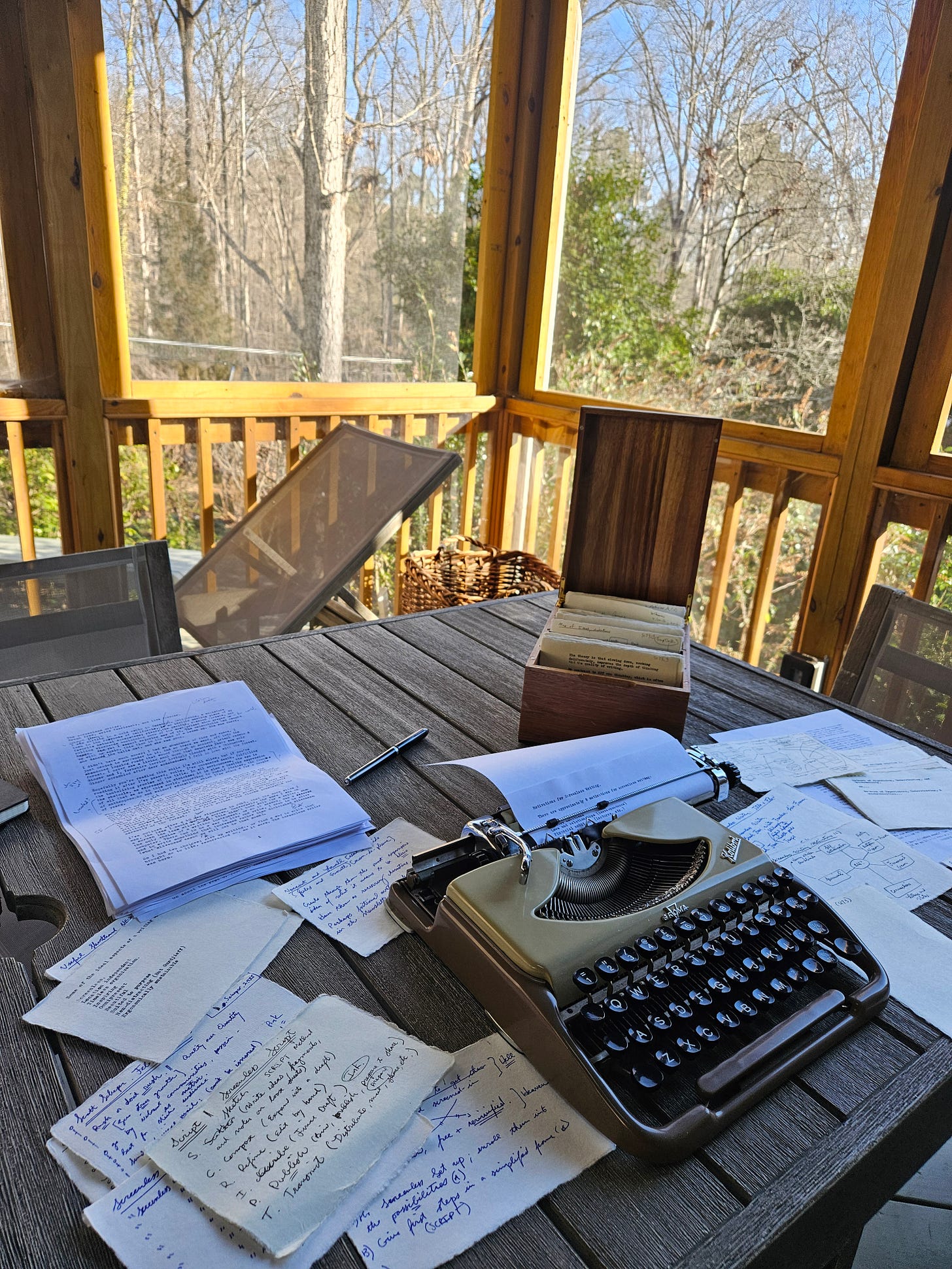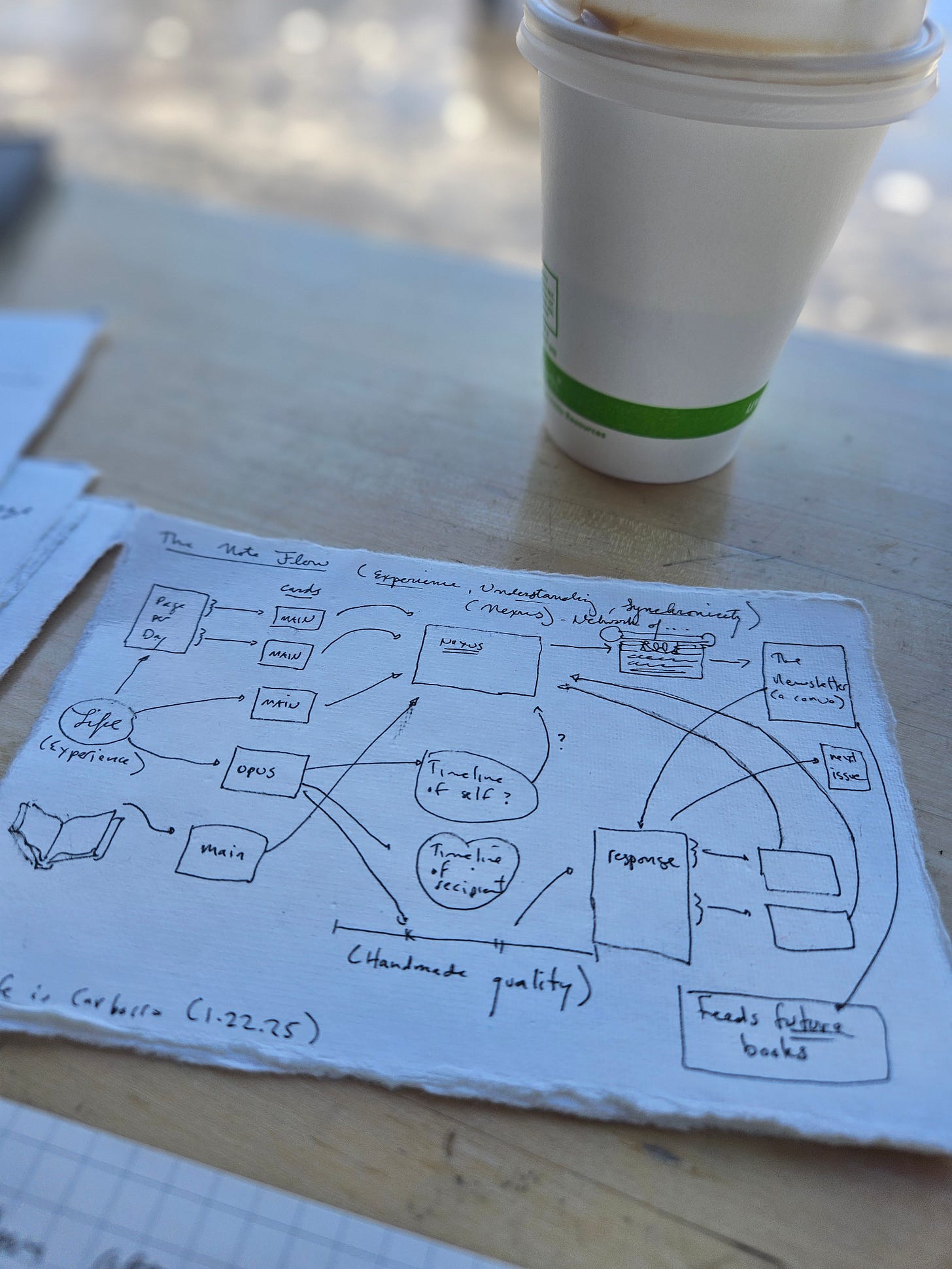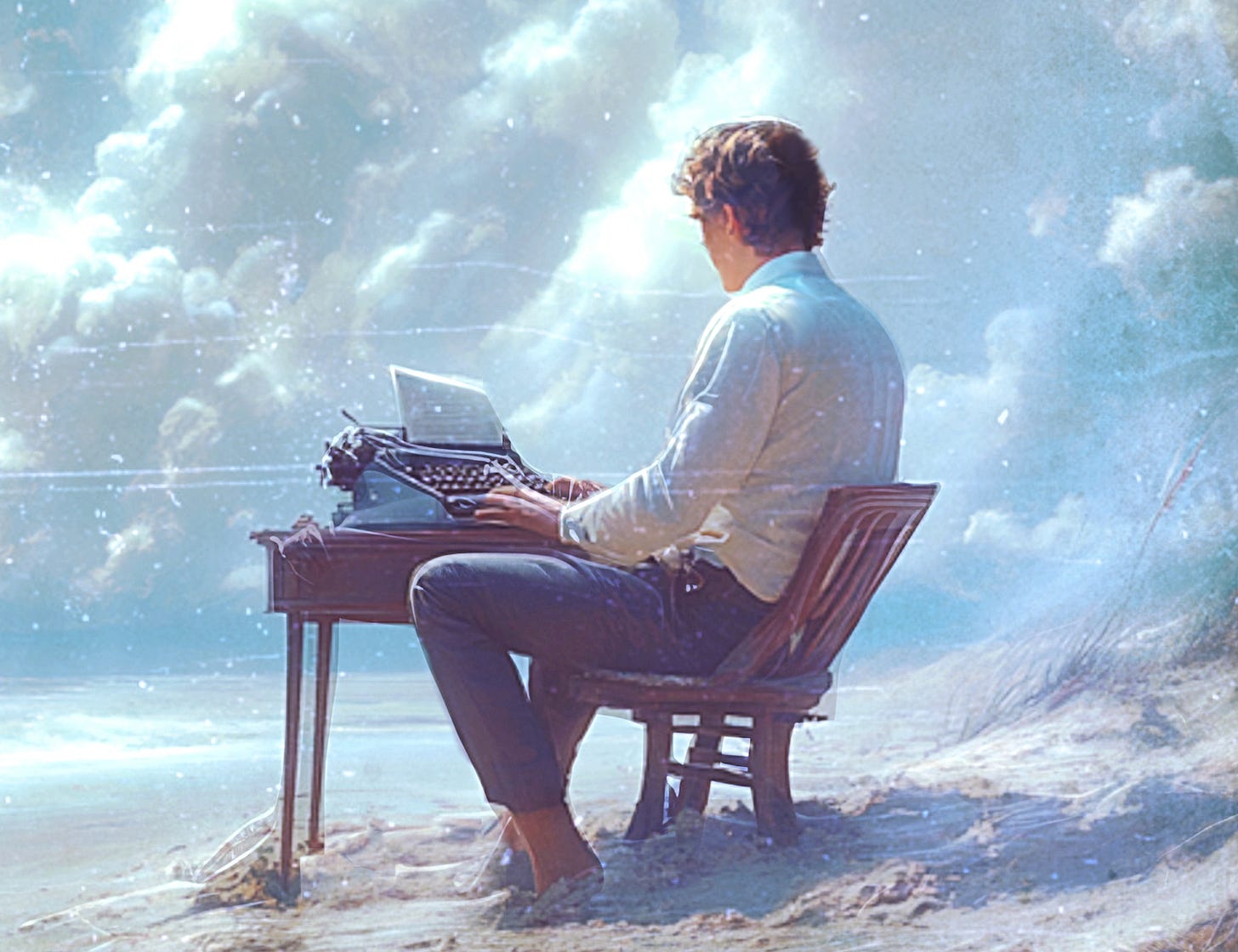What did I do during every class in high school? Well, I doodled of course. Some doodles maintained their abstract nature; others became a sketch, in profile, of the girl in the pony tail. At the bottom of every sketch was love.
Now, kids in lesson on their screens, I don't know what they're doing. But it isn't tactile or creative. It isn't free-flowing. It's under the rubric of the algorithm.
I've built a Second Brain in the PARA method. I use it for certain things, to be sure. The problem is that things get lost in there. I have the largest, most diverse digital brain ever. What's even in there and how do I find it?
So, learning the Zettelkasten method and implementing it last year was a breakthrough. I was content to just 'miss paper' before. Now I refuse to miss paper. I use paper, rediscover the joy of fondling ideas in physicality.
I've also been refining my drafting and publishing process. My Zettelkasten is called NEXUS (Network of EXperiences, Understanding, and Synchronicity). It's like a Screenless computer.
Here’s a picture:
Since creating this beautiful thing, full of handmade paper in a wooden box, stress is down and metabolic health is up. Why? Because metabolic health links to stress. And for me, digital overwhelm is a nefarious source of stress.
So, I still have a digital Second Brain somewhere, and it still grows somehow... it's just that I don't have to rely on it for my writing when I don't want to.
I've also read thousands of books in Kindle, and lately I've been seeing what 15 or so notes come up daily in the Readwise Reader, and I'll create a Nexus Note for the most useful ones. Its revelatory because I hardly remember having read the original, in that digital format on the Paper White, but now I get a second pass at this wealth of knowledge I'd taken in in a frantic state.
Though I obsessively clung to paper books, I got the Kindle Paperwhite when I lived in the cabin in Cazadero, because there was a bath outside under the stars, the stars in their glorious array. So I'd sometimes read out there, listen to the rustle of a skunk or whatever. Once a bat fell by the bathtub, and when I went to find it, it was gone! You see, I remember those visceral experiences more than what I was reading. Though I had to have absorbed something from those kindle reading times. I think it was also a sort of passive stress reduction.
The Kindle syncs with a Notion second Digital Brain which partially syncs with Everynote and Dropbox. (Getting confused just thinking about it).
So in embracing paper, I've made a HUGE life and creativity upgrade this year. I have a Screenless Workspace where I can write, flow, and play... like in those old days when I used to doodle. I suddenly feel more awake and alive to words than ever before.
And I run Classic Typewriter company, but that is secondary outpouring of my desire to share this thing which has provided me with some of the happiest moments of my life: writing on a typewriter, or Screenless Writing.
My new book is about writing sans screens. Here’s a picture of the process:
You can see that some notes are typed and some are hand written. I love that none of them are in a computer, being adjusted by an algorithm, and my thinking is free of the matrix.
It takes a little discipline and practice to master this process of thinking before hand and adding in essential components after drafting. (This shows the process between the first and second draft).
Here’s the card that captures version 2.0 of the NEXUS flow. Note that more notes flow out of draft one, and they’re captured or preserved in the box, for the current work’s evolution, future work, and thought evolution (the most important part!).
My daughter goes to a Waldorf school, where they learn without screens in general. This is feeding my process, including the philosophical work of the founder, Rudolf Steiner.
I’ve also been inspired by a few legendary writers, and a few non-digital friends I have that break the mold.
So, as one other component of the equation, MOST of my writing will be delivered non-digitally in 2025, via books and a paper newsletter (which I will go into in the book). I’m building a fulfilling, healthful, lucrative, meaningful life around a screenless writing practice.
Something like this:
Write on,
Steven Budden Jr.
Screenless Writer + Analog Warrior + Classic Typewriter Co.
PS. If you want to get the book when it comes out circa March, stay subscribed here or join my weekly email at Classic Typewriter.








Have you found any "authentic" softer typing paper (as opposed to the readily available and harder copy paper)? I have a small stash someone gave me. I've looked on eBay. Prices for the number of sheets per ream or pad plus shipping costs make it cost prohibitive for me.
Wonderful! I've even heard that cursive handwriting is making a comeback in schools. A hands-on, legible world, what a beautiful prospect. Hooray for Waldorf education, pens, paper, and the rhythmic music of typewriter keys.